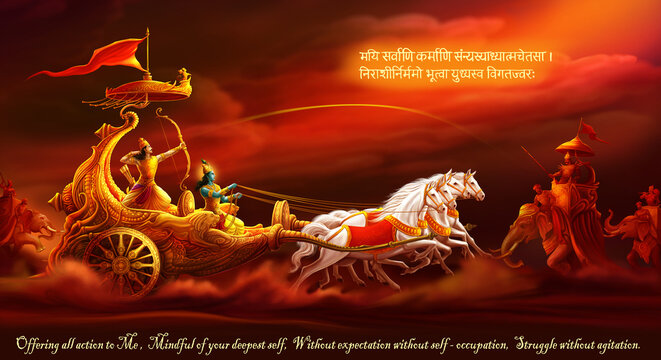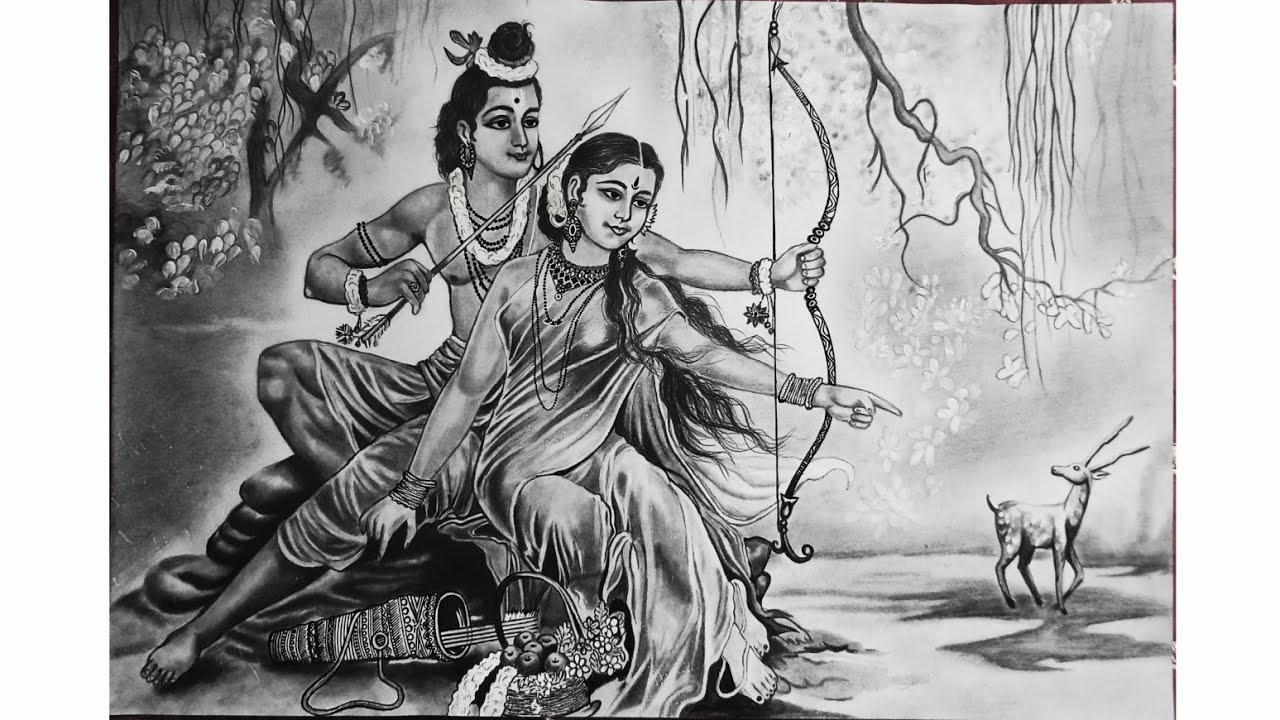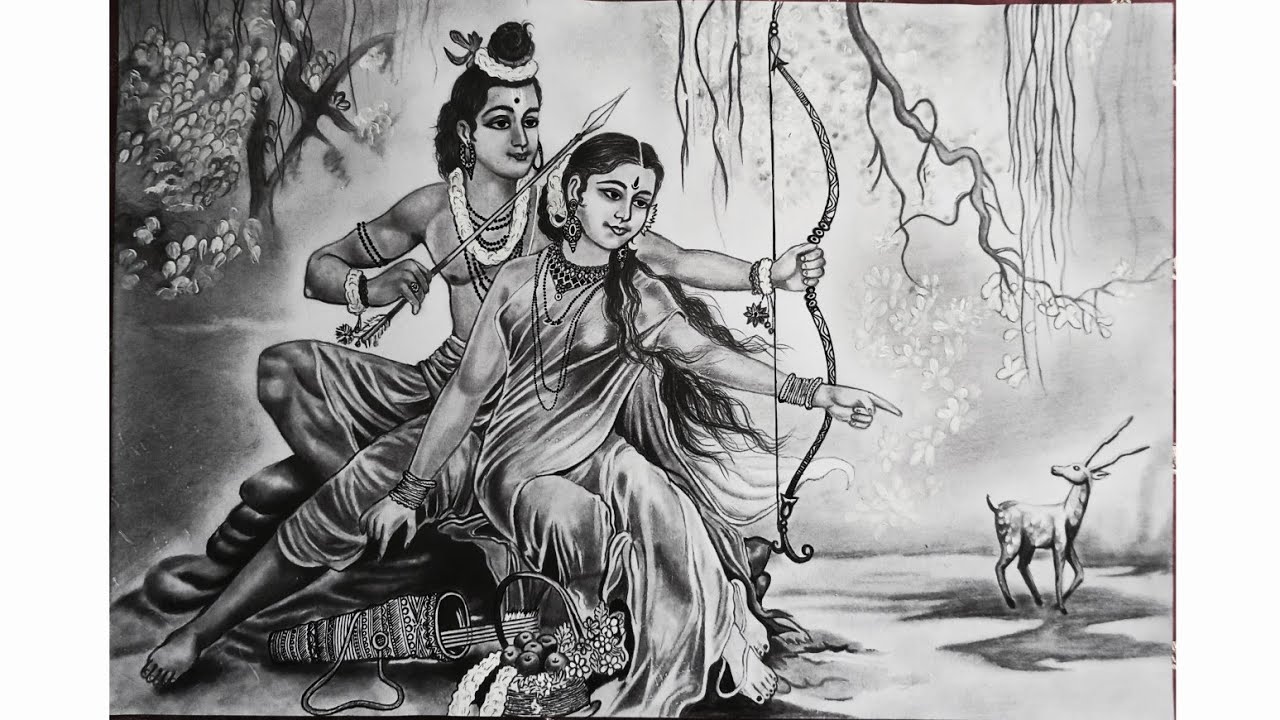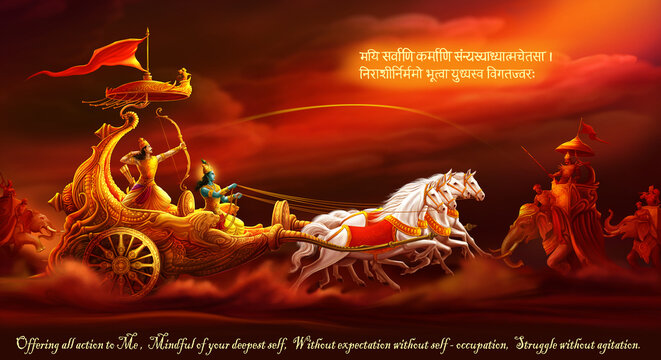
October 10, 2025
Ved, Puran
5 min read
Mahabharata
The Mahabharata is not just a story of war — it is a mirror of life, duty, and the eternal struggle between right and wrong. Written by Sage Vyasa, this grand epic explores every emotion and dilemma that humans face. From the righteousness of Yudhishthira to the wisdom of Krishna and the fall of mighty warriors like Karna and Bhishma, the Mahabharata teaches that truth and justice are rarely simple. It reminds us that dharma (righteousness) often lies in the choices we make, not in the outcomes we seek.
Mahabharata: The Epic of Dharma, Duty, and Divine Wisdom
Introduction
The Mahabharata, composed by Sage Vyasa, stands as the largest and most profound epic in Sanatan Dharma. It is not merely the tale of the Kauravas and Pandavas—it is the story of the human soul navigating the eternal conflict between righteousness (dharma) and unrighteousness (adharma).
Through wars, vows, love, betrayal, and divine revelation, it weaves lessons on duty, morality, devotion, and destiny.
At its heart lies the Bhagavad Gita, where Lord Krishna unveils the eternal wisdom of action, detachment, and divine surrender.
श्रेयान् स्वधर्मो विगुणः परधर्मात् स्वनुष्ठितात्।
“Better is one’s own duty, though imperfect, than another’s duty well performed.” — Bhagavad Gita 3.35
1. Births and Divine Origins
The Pandavas—Yudhishthira, Bhima, Arjuna, Nakula, and Sahadeva—were born through divine blessings from various deities, each representing a celestial force upholding dharma.
The Kauravas, born from Gandhari and Dhritarashtra, embodied the forces of ambition, jealousy, and human frailty.
These contrasting origins symbolize the cosmic balance between light and darkness, showing how even divine will allows both virtue and vice to coexist—so humanity may choose.
धर्मो रक्षति रक्षितः।
“Dharma protects those who protect it.”
2. Childhood and Upbringing
Under the guidance of Guru Drona and Bhishma, both the Pandavas and Kauravas mastered warfare, discipline, and strategy.
Yet, while the Pandavas cultivated humility and virtue, the Kauravas nurtured envy.
Krishna’s quiet presence in their lives—especially as Arjuna’s guide—demonstrated that divine mentorship leads to righteous growth.
In Sanatan Dharma, early education was never just intellectual—it was moral and spiritual, designed to align human will with divine law.
3. The Game of Dice and the Exile
Fate took a cruel turn when Duryodhana’s jealousy led to the infamous game of dice. The Pandavas lost their kingdom, wealth, and even their honor, entering 13 years of exile.
Draupadi’s humiliation in the Kaurava court became one of the darkest yet most transformative moments of the epic. Her unwavering faith and plea to Krishna invoked divine justice.
यदा यदा हि धर्मस्य ग्लानिर्भवति भारत।
“Whenever righteousness declines and unrighteousness rises, I manifest Myself.” — Bhagavad Gita 4.7
The exile was not punishment but purification—a journey through suffering, faith, and self-realization.
4. Krishna’s Guidance
Krishna, the embodiment of divine wisdom, became the soul of the Mahabharata.
When Arjuna faltered before battle, paralyzed by doubt, Krishna’s discourse—the Bhagavad Gita—transformed despair into spiritual enlightenment.
He revealed the path of Karma Yoga (selfless action), Bhakti (devotion), and Jnana (knowledge), showing that duty performed without attachment leads to liberation.
कर्मण्येवाधिकारस्ते मा फलेषु कदाचन।
“Your right is to perform your duty only, never to its fruits.” — Bhagavad Gita 2.47
5. The Kurukshetra War
The war of Kurukshetra was not merely a human conflict—it was the cosmic struggle between dharma and adharma.
Every weapon raised, every vow taken, carried profound moral weight.
Bhishma’s vow of celibacy, Karna’s loyalty, Arjuna’s valor, and Drona’s duty each reflected the complexity of righteousness. Even those who fought on the “wrong” side upheld personal codes of honor.
The Mahabharata reminds us that dharma is not rigid—it demands discernment and courage, not blind obedience.
6. Draupadi’s Role
Draupadi, born of divine fire, stands as the embodiment of courage and faith.
Her voice of justice in a male-dominated world echoes across time—her devotion to Krishna and her strength in adversity remind humanity that spiritual power transcends gender and circumstance.
Her story teaches that true strength lies not in revenge, but in resilience and trust in divine justice.
7. Bhishma and Karna – The Dilemmas of Dharma
Bhishma, the grand patriarch, symbolizes sacrifice and bound duty. His pledge of lifelong celibacy for his father’s happiness shaped the destiny of Hastinapur.
Karna, the unsung hero born of the Sun, lived with honor and generosity, yet his loyalty to Duryodhana placed him in the web of adharma.
Both men illuminate that dharma is rarely clear—it must be understood with wisdom and compassion.
सत्यं ब्रूयात् प्रियं ब्रूयात्, न ब्रूयात् सत्यमप्रियम्।
“Speak the truth, speak pleasantly, and never speak the unpleasant truth.” — Manusmriti
8. Spiritual and Ethical Lessons
The Mahabharata is a treasury of spiritual ethics:
Dharma and Duty: True duty demands courage and moral clarity.
Devotion and Faith: The Pandavas’ faith in Krishna sustains them through despair.
Sacrifice and Resilience: Every loss becomes a step toward self-realization.
Moral Complexity: Even the righteous err, reminding us that perfection lies only in surrender to the Divine.
9. The Aftermath and Human Lessons
Victory comes at a cost. The Pandavas win the war but lose peace—proving that dharma, not power, is the true victory.
Yudhishthira’s sorrow and his eventual ascent to heaven symbolize the soul’s journey from duty to detachment.
The Mahabharata closes not with triumph, but with introspection—urging humanity to choose righteousness even when it hurts.
10. Cultural and Religious Impact
Across millennia, the Mahabharata continues to shape Indian culture, literature, and philosophy.
From classical dance to modern thought, its stories guide moral understanding and devotion.
The Bhagavad Gita within it remains one of the greatest spiritual treatises, teaching timeless principles of selfless action and inner peace.
Conclusion
The Mahabharata is not merely a chronicle of war—it is the scripture of life itself.
It reveals that every human stands on their own Kurukshetra, torn between right and wrong, action and inaction, faith and fear.
Through the guidance of Krishna and the courage of Arjuna, the epic teaches that victory is not of the sword, but of the soul—achieved when we walk the path of dharma with faith, humility, and love.
धर्मो रक्षति रक्षितः।
“He who upholds dharma, is upheld by dharma.”
Introduction
The Mahabharata, composed by Sage Vyasa, stands as the largest and most profound epic in Sanatan Dharma. It is not merely the tale of the Kauravas and Pandavas—it is the story of the human soul navigating the eternal conflict between righteousness (dharma) and unrighteousness (adharma).
Through wars, vows, love, betrayal, and divine revelation, it weaves lessons on duty, morality, devotion, and destiny.
At its heart lies the Bhagavad Gita, where Lord Krishna unveils the eternal wisdom of action, detachment, and divine surrender.
श्रेयान् स्वधर्मो विगुणः परधर्मात् स्वनुष्ठितात्।
“Better is one’s own duty, though imperfect, than another’s duty well performed.” — Bhagavad Gita 3.35
1. Births and Divine Origins
The Pandavas—Yudhishthira, Bhima, Arjuna, Nakula, and Sahadeva—were born through divine blessings from various deities, each representing a celestial force upholding dharma.
The Kauravas, born from Gandhari and Dhritarashtra, embodied the forces of ambition, jealousy, and human frailty.
These contrasting origins symbolize the cosmic balance between light and darkness, showing how even divine will allows both virtue and vice to coexist—so humanity may choose.
धर्मो रक्षति रक्षितः।
“Dharma protects those who protect it.”
2. Childhood and Upbringing
Under the guidance of Guru Drona and Bhishma, both the Pandavas and Kauravas mastered warfare, discipline, and strategy.
Yet, while the Pandavas cultivated humility and virtue, the Kauravas nurtured envy.
Krishna’s quiet presence in their lives—especially as Arjuna’s guide—demonstrated that divine mentorship leads to righteous growth.
In Sanatan Dharma, early education was never just intellectual—it was moral and spiritual, designed to align human will with divine law.
3. The Game of Dice and the Exile
Fate took a cruel turn when Duryodhana’s jealousy led to the infamous game of dice. The Pandavas lost their kingdom, wealth, and even their honor, entering 13 years of exile.
Draupadi’s humiliation in the Kaurava court became one of the darkest yet most transformative moments of the epic. Her unwavering faith and plea to Krishna invoked divine justice.
यदा यदा हि धर्मस्य ग्लानिर्भवति भारत।
“Whenever righteousness declines and unrighteousness rises, I manifest Myself.” — Bhagavad Gita 4.7
The exile was not punishment but purification—a journey through suffering, faith, and self-realization.
4. Krishna’s Guidance
Krishna, the embodiment of divine wisdom, became the soul of the Mahabharata.
When Arjuna faltered before battle, paralyzed by doubt, Krishna’s discourse—the Bhagavad Gita—transformed despair into spiritual enlightenment.
He revealed the path of Karma Yoga (selfless action), Bhakti (devotion), and Jnana (knowledge), showing that duty performed without attachment leads to liberation.
कर्मण्येवाधिकारस्ते मा फलेषु कदाचन।
“Your right is to perform your duty only, never to its fruits.” — Bhagavad Gita 2.47
5. The Kurukshetra War
The war of Kurukshetra was not merely a human conflict—it was the cosmic struggle between dharma and adharma.
Every weapon raised, every vow taken, carried profound moral weight.
Bhishma’s vow of celibacy, Karna’s loyalty, Arjuna’s valor, and Drona’s duty each reflected the complexity of righteousness. Even those who fought on the “wrong” side upheld personal codes of honor.
The Mahabharata reminds us that dharma is not rigid—it demands discernment and courage, not blind obedience.
6. Draupadi’s Role
Draupadi, born of divine fire, stands as the embodiment of courage and faith.
Her voice of justice in a male-dominated world echoes across time—her devotion to Krishna and her strength in adversity remind humanity that spiritual power transcends gender and circumstance.
Her story teaches that true strength lies not in revenge, but in resilience and trust in divine justice.
7. Bhishma and Karna – The Dilemmas of Dharma
Bhishma, the grand patriarch, symbolizes sacrifice and bound duty. His pledge of lifelong celibacy for his father’s happiness shaped the destiny of Hastinapur.
Karna, the unsung hero born of the Sun, lived with honor and generosity, yet his loyalty to Duryodhana placed him in the web of adharma.
Both men illuminate that dharma is rarely clear—it must be understood with wisdom and compassion.
सत्यं ब्रूयात् प्रियं ब्रूयात्, न ब्रूयात् सत्यमप्रियम्।
“Speak the truth, speak pleasantly, and never speak the unpleasant truth.” — Manusmriti
8. Spiritual and Ethical Lessons
The Mahabharata is a treasury of spiritual ethics:
Dharma and Duty: True duty demands courage and moral clarity.
Devotion and Faith: The Pandavas’ faith in Krishna sustains them through despair.
Sacrifice and Resilience: Every loss becomes a step toward self-realization.
Moral Complexity: Even the righteous err, reminding us that perfection lies only in surrender to the Divine.
9. The Aftermath and Human Lessons
Victory comes at a cost. The Pandavas win the war but lose peace—proving that dharma, not power, is the true victory.
Yudhishthira’s sorrow and his eventual ascent to heaven symbolize the soul’s journey from duty to detachment.
The Mahabharata closes not with triumph, but with introspection—urging humanity to choose righteousness even when it hurts.
10. Cultural and Religious Impact
Across millennia, the Mahabharata continues to shape Indian culture, literature, and philosophy.
From classical dance to modern thought, its stories guide moral understanding and devotion.
The Bhagavad Gita within it remains one of the greatest spiritual treatises, teaching timeless principles of selfless action and inner peace.
Conclusion
The Mahabharata is not merely a chronicle of war—it is the scripture of life itself.
It reveals that every human stands on their own Kurukshetra, torn between right and wrong, action and inaction, faith and fear.
Through the guidance of Krishna and the courage of Arjuna, the epic teaches that victory is not of the sword, but of the soul—achieved when we walk the path of dharma with faith, humility, and love.
धर्मो रक्षति रक्षितः।
“He who upholds dharma, is upheld by dharma.”


